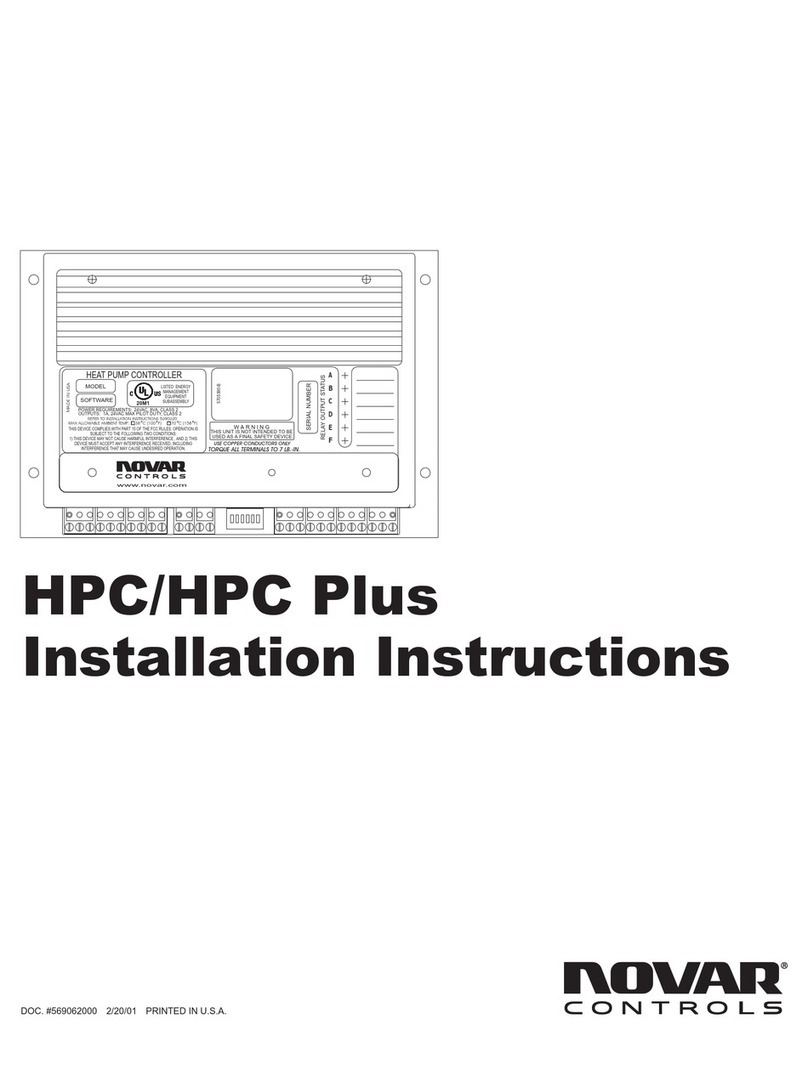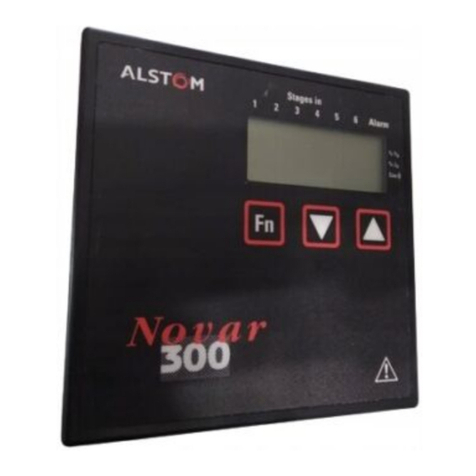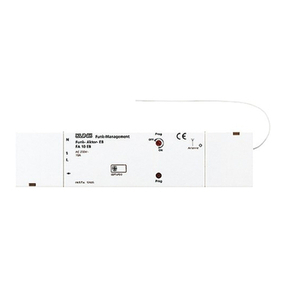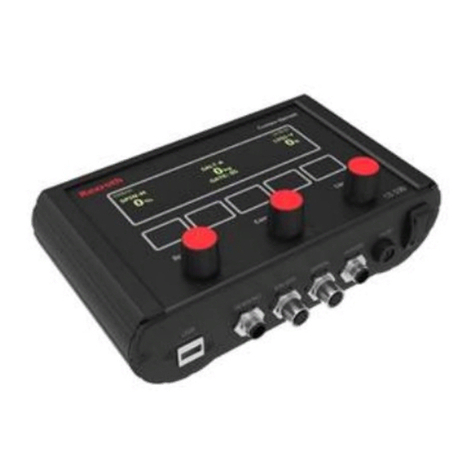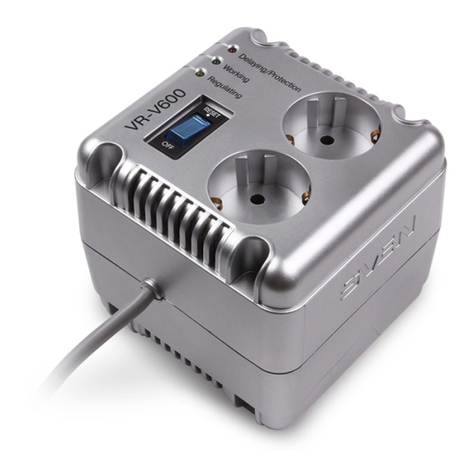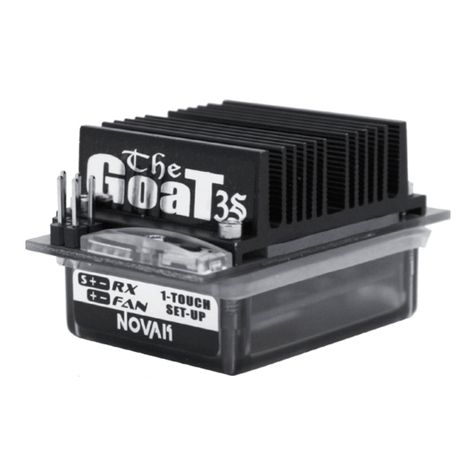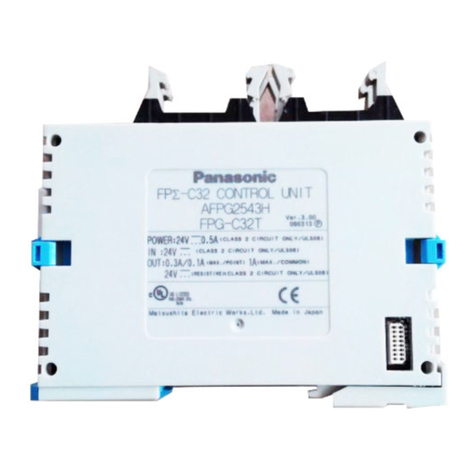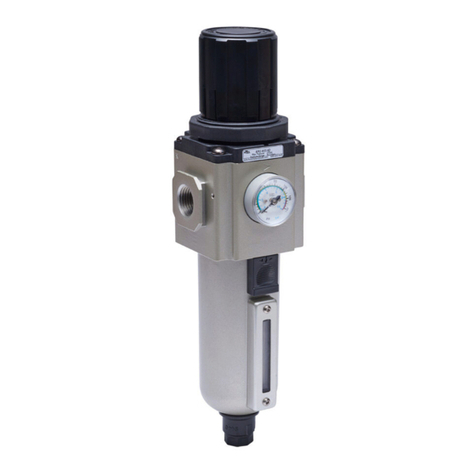Novar Savvy User manual

Savvy®Service Manual
Introduction
The Savvy®functions as both a system network manager
and intelligent local controller in Novar’s Logic One®
Automated Building Control System by combining the
capabilities of an Executive Processor and an Input/Output
Module. The Savvy can be configured to meet complex
control requirements, regardless of facility size and/or
special monitoring and data collection requirements.
This document describes the Savvy, provides instructions
for replacing the electronics assembly and for taking a
milliamp reading, and provides troubleshooting guidelines
for:
§Network Communications Loss
§Telephone Communications Loss
§Analog Light Sensor Faults
§Outdoor Temperature Sensor Faults
§Analog Sensor Faults
§Phase Loss Faults
§Outputs
§Digital Inputs
§Pulse Meter Faults
WARNING! Before performing any of the operations outlined in
this document, review the Note and the Warning that
appear at the beginning of this manual.
Precautions
NOTE! To perform any of the operations outlined in this manual,
a person must meet both of the following qualifications:
nBe a licensed electrician or a licensed HVAC
technician.
nHave experience in troubleshooting building
automation and HVAC controls.
DOC. #TD-0240 11/30/06 1

WARNING! Some service and maintenance checks in this manual
require that the unit’s power be turned on. Multiple
voltages at the rooftop unit present an electrical shock
hazard that can cause injury or death. Before attempting to
service Novar equipment, turn off power to the rooftop
unit at the disconnect switches. When performing the
service checks that require power, turn on the power as
necessary but be aware that the electrical shock hazard
exists. No one should perform the operations outlined in
this manual unless he or she meets both of the
qualifications specified above and is trained and
experienced in working with the following voltages:
n24-VDC
n24-VAC
n110-VAC
n208-VAC
n277-VAC
n480-VAC
Make sure that the 24-VAC power wiring is connected to
a dedicated transformer. No other devices (including the
outputs) should be powered by the transformer connected
to the Savvy.
Do not ground the transformer for this module on the
secondary side.
Make sure that the Savvy power cannot be switched off
accidentally. the Savvy requires continuous power for
proper operation.
Description
The Savvy is mounted on a baseplate and powered by a 24-VAC, Class 2,
transformer connected to a 120-VAC source. A second 120-VAC circuit powers
the transformer for the outputs. The output terminal strip is rated 24-VAC, 2
amps, pilot duty. The outputs are controlled by low voltage triacs or relays.
The Hand/Off/Auto (HOA) switches are used for override for each output.
The remote override terminal strip allows remote, timed, or override capabilities
that are software-defined and driven. The remote override panel uses a
momentary dry contact.
A 22-gauge (minimum), 2-wire, shielded cable must be used for module network
communications. Cable length should not exceed 5000 feet.
The Class 2 input terminal strip is the termination point for 4- to 20-milliamp
current loop (analog) or contact closure (digital) inputs. All digital inputs must
be dry contact.
The Savvy draws 1.2-amp current. Terminals 75 and 76 (shown in Figure 1) are
used for the 24-VAC power connection. Terminals 39, 40, and 41 (see Figure 1)
are used for the Module Network Communications connections (2.5 VDC).
2DOC. #TD-0240 11/30/06
Savvy®Service Manual

DOC. #TD-0240 11/30/06 3
Savvy®Service Manual
Figure 1. Savvy transition board

NOTE! The Savvy is a Class 2 low-voltage device. Do not connect
120 VAC to any terminal. Do not connect AC voltage to
Module Network Class 2 communication terminals. Do not
connect DC voltage to module output Class 2 terminals (the
triacs will not work). Do not ground the transformer for
this module to the secondary side.
The Network Communications Loss and Telephone Communications Loss
troubleshooting charts included in this document can be used to troubleshoot
communications loss.
4DOC. #TD-0240 11/30/06
Savvy®Service Manual
Check all rooftop units (RTUs) and IOMs to
determine where communication loss is occurring.
Remove the bottom cover from the
Savvy to access the transition
board, disconnect the wires on
Terminals 39, 40, and 41, and
remove and reinstall the Savvy
electronics assembly.
Are the IOMs communicating?
Use the Communications Loss
troubleshooting procedures
provided in the appropriate
ETM Service Manual.
Network Communications Loss
Troubleshooting Chart
NO
If no RTUs or IOMs
are communicating
If no RTUs are communicating
but all IOMs are communicating
If some RTUs are communicating
and IOMs are communicating
intermittently
If some RTUs are communicating
and all IOMs are communicating
Check the RTUs/ETMs, circuit
breakers, disconnects, and
smoke detectors.
Are the RTUs/ETMs powered
and the IOMs communicating?
Make sure the RTUs/ETMs
are addressed correctly.
Refer to the appropriate
ETM Service Manual for
address information.
Replace the Savvy with
an identical model and
make sure it operates.
Remove the bottom cover from the
Savvy to access the transition
board, disconnect the wires on
Terminals 39, 40, and 41, and meter
the wires + to shield and – to shield.
Is 2.5 VDC present?
Power up the RTUs or
repair them, as necessary.
If the voltage on the wires is incorrect,
check the communication voltage at
each ETM. Start at any RTU and
remove the communication wires from
the ETM communication terminals.
Meter the terminals between + to
shield and –to shield.
Is 2.5 VDC present on the terminal
strip and terminals?
If ETMs are powered/
IOMs are communicating If none of the RTUs
have power
YES
If there is no voltage on the terminal
strip, replace the ETM with an
identical model and make sure the
replacement operates properly.
If 2.5 VDC is present on the
terminals, reconnect the wires and
proceed to the next RTU. Continue
to meter each unit.
If 2.5 VDC is present on all terminals
on each ETM, the communication
wire is shorted. Check each wire for
a short to ground.
Terminal Strip Terminals

Replacing the Savvy
Electronics Assembly
If the troubleshooting procedures provided in this document indicate that the
Savvy should be replaced the following procedure should be used.
Step Procedure
1Remove the bottom cover from the Savvy:
§Loosen the two Allen screws at the bottom of the Savvy.
§Pull the bottom of the cover away from the Savvy and down.
2Move all lighting HOA toggle switches to the center position to
ensure that all lighting loads stay on.
3Check to see if an Ethernet®cable is connected to the Savvy
electronics and, if applicable, disconnect it.
continued
DOC. #TD-0240 11/30/06 5
Savvy®Service Manual
NO
YES
NO
YES
NO
YES
Check the status of the lights on the store
override panel located next to the Savvy.
Does the Savvy have power?
Remove the bottom cover of the Savvy to
access the transition board, unplug the Savvy
phone line from the jack on the transition board,
and plug the line into a single-line analog phone
to determine if the line is operational.
Is there is a dial tone?
Telephone Communications Loss
Troubleshooting Chart
NO
YES
Push down firmly on the top part of the
Savvy to make sure it is plugged into the
base.
Verify that communication
has been restored.
Meter Terminals 75 and 76
on the transition board.
Is 24-VAC present?
Plug the line back in. If
the Savvy still does not
answer, replace the
Savvy and make sure the
replacement operates
properly.
Make arrangements to have
the telephone line repaired.
Replace the Savvy and
make sure the replacement
operates properly.
Check the Savvy
transformer and BMS #1
breaker for power.

Step Procedure
4Loosen the two retaining Allen screws used to mount the
electronic assembly to the Savvy baseplate (see Figure 2).
5Push the assembly straight up off the base.
6Slide the replacement electronics assembly down from the top of
the baseplate assembly, over the mounting posts, guiding the
DB25 and DB37 connectors over their connectors on the
transition board.
7Tighten the two retaining Allen screws to secure the assembly.
8Reconnect the Ethernet cable, if applicable.
9Perform a program download, if needed, and verify that the
equipment is operating properly.
10 Set all lighting HOA toggle switches to the AUTO position.
11 Return the Savvy’s bottom cover and tighten the screws to secure it.
Figure 2. Location of mounting screws on a Savvy electronics assembly
6DOC. #TD-0240 11/30/06
Savvy®Service Manual
ALLEN SCREWS
LOCATED ON BOTTOM LIP
OF ELECTRONICS BACKPLATE
Allen screws used to mount
the electronics assembly to
the baseplate can be found
on the bottom edge of the
electronics backplate.

Analog Light Sensor
The Analog Light Sensor (ALS-300 and ALS-1.5K; Figure 3) is mounted on the
Outdoor Sensor Assembly on the roof, facing north.
It uses a shielded, two-wire cable to:
§Receive 24-VDC power from the Savvy or an Input/Output Module (IOM).
§Send a 4- to 20-milliamp signal proportional to the light level back to the input
terminal strip.
NOTE! When the sensor is wired, polarity must be observed.
The Savvy translates that signal into a 0–300 or 0–1500 footcandle reading. The
sensor is permanently calibrated at the factory.
The Analog Light Sensor Faults Troubleshooting Chart included in this
document can be used to troubleshoot ALS faults.
DOC. #TD-0240 11/30/06 7
Savvy®Service Manual
Figure 3. Analog Light Sensor

Taking a Milliamp
Reading at a Sensor
The following procedure should be used when it is necessary to take a milliamp
reading at a sensor.
Step Procedure
1Remove the positive wire from the sensor terminal strip.
2Move the meter leads to the amp socket of the meter and set the
meter to an amp range that will accommodate a 4- to 20-milliamp
DC reading.
3Place the meter in series with the sensor (Figure 4) and read the
milliamps.
8DOC. #TD-0240 11/30/06
Savvy®Service Manual
AMP
DC
10 A
300 mA COM
VOLTAGE
Figure 4. Taking a milliamp reading at a sensor

DOC. #TD-0240 11/30/06 9
Savvy®Service Manual
NO
YES
NO
YES
NO
YES
Typically, the ALS is wired to Savvy Terminals 42
and 43 (Input #1). Refer to the Savvy Baseplate
Installation Instructions for exceptions or contact
your Novar Controls account representative.
Is the sensor properly wired?
Meter the appropriate terminals
with the wires connected.
Is 24 VDC present?
Analog Light Sensor Faults
Troubleshooting Chart
NO
YES
Connect the ALS to the
appropriate terminals.
Take a milliamp reading at
the terminal strip.
Is the milliamp reading within
the 4–20 milliamps range?
Remove the sensor wires
from the terminal strip
and meter the terminals.
Is 24 VDC present?
Replace the using
the procedure provided in
this manual and make
sure the replacement
operates properly.
Savvy Make sure the wires are connected to
the and meter the terminals of
the ALS on the Outdoor Sensor
Assembly on the roof.
Note! Both the LED and the sensor are
polarity-sensitive.
Is 24 VDC present (LED will be lit)?
Savvy
Check the polarity.
Note! Both the LED and the sensor
are polarity-sensitive.
Is the polarity correct?
The wire is open.
Trace and repair it.
The ALS or wire is shorted.
Reconnect the wires to the
terminal strip, Disconnect the
wires from the ALS on the roof,
and meter the wires.
Is 24 VDC present?
The input is bad. Replace
the and make sure the
replacement operates
properly.
Savvy
The sensor is shorted.
Replace it and make sure
that the replacement
operates properly.
The wire is shorted.
Trace and repair it.
NO
YES
NO
YES
Replace the ALS and make
sure the replacement
operates properly.
Refer to the Savvy Baseplate
Installation Instructions.
NO
YES
Reverse the
connections.

Outdoor Temperature
Sensor
The Outdoor Temperature Sensor (OTS; Figure 5) is a digital pulse sensor
designed for use with Novar’s Executive Controller or Savvy. The OTS/2 model
is a 4- to 20-mA analog sensor designed for use with Novar’s Executive
Processor (EP/2) or Savvy. The OTS/2 comes equipped with a light-emitting
diode (LED). The OTS does not.
The sensor is mounted on the Outdoor Sensor Assembly on the roof, facing
north.
The sensor, which should be connected to Savvy Terminals 60–62, uses a
shielded, two-wire cable to:
§Receive 18VDC power from the Savvy.
§Send signals.
NOTE! Polarity must be observed when the sensor is wired.
The sensor is permanently calibrated at the factory.
10 DOC. #TD-0240 11/30/06
Savvy®Service Manual
Figure 5. Outdoor Temperature Sensor

DOC. #TD-0240 11/30/06 11
Savvy®Service Manual
NO
YES
If voltage is incorrect with wires connected
to the terminals & correct with wires
disconnected from terminals
NO
YES
Meter Terminals 60 to 61 and 62 to
61 with the wires connected and again
with the wires disconnected:
With the wires connected:
Terminals 60 to 61 should be 2.7 VDC
Terminals 62 to 61 should be 18.2 VDC
With the wires disconnected:
Terminals 60 to 61 should be 0.0 VDC
Terminals 62 to 61 should be 18.0 VDC
Savvy
Outdoor Temperature Sensor Faults
Troubleshooting Chart
Reconnect the wires at the disconnect the
wires from the Outdoor Temperature Sensor, and
meter the wires.
–to shield should be 0.0 VDC
+ to shield should be 18.0 VDC
Is the voltage correct?
Savvy, Use the HOA switch to put the lights in
override, power off the lift the
electronics assembly off its base,
and meters Terminals 60 to 61 and 62 to
61 for Ohms.
Are the terminals shorted?
Savvy,
Savvy
Replace the Outdoor
Temperature Sensor.
The wire is bad.
Trace and repair it.
Replace the base and
electronics assembly and
make sure the replacements
operate properly.
Savvy Replace the and
make sure the replacement
operates properly.
Savvy
If voltage is incorrect both with wires connected
to & disconnected from the terminals
NOTE! The sensor is polarity-sensitive and
will read open fault if the polarity is not
correct. The LED is not polarity-sensitive; it
indicates power is present.

12 DOC. #TD-0240 11/30/06
Savvy®Service Manual
NO
YES
NO
YES
NO
YES
NO
YES
NO
YES
Determine the input number and meter the
appropriate terminals at the or IOM
with the wires connected.
Is 24 VDC present?
Savvy
Analog Sensor Faults
Troubleshooting Chart
Take a milliamp reading at the terminal strip
using the procedure provided in this manual.
Is the reading within the 4- to 20-milliamp range?
Remove the sensor wires from the
terminal strip and meter the terminals.
Is 24 VDC present?
Replace the using the
procedure provided in this
manual and make sure the
replacement operates
properly.
Savvy Reconnect the wires at the
or IOM and meter the
sensor’s terminal.
Is 24 VDC present?
Savvy
The sensor or the wire is shorted.
Reconnect the wire. Remove the
wire from the sensor and meter
the wire.
Is 24 VDC present?
The input is bad. Replace the
using the procedure provided
in this manual and make sure the
replacement operates properly.
Savvy
The sensor is shorted. Replace it
and make sure the replacement
operates properly.
The wire is shorted.
Trace and repair it.
NO
YES
Replace the sensor and
make sure the replacement
operates properly.
Refer to the Savvy Baseplate
Installation Instructions.
The wire is open.
Trace and repair it.
Check the polarity.
Is it correct?
Revers the
connections.

DOC. #TD-0240 11/30/06 13
Savvy®Service Manual
NO
YES
NO
YES
Remove the wires from Terminals
65 and 66 and meter them.
Is 5 VDC present?
NO
YES
Reconnect the wires to
Terminals 65 and 66.
Remove the wires from the relay
on the Phase Loss monitor and
meter them.
Is 5 VDC present?
Replace the using
the procedure provided in
this manual and make sure
the replacement operates
properly.
Savvy
NO
YES
Is the correct power coming into
the main distribution panel?
Phase Loss Faults
Troubleshooting Chart
Meter Terminals 65 and 66 on the
Is approximately 5 VDC present?
Savvy
Call the local utility
for instructions.
Remove the wires from
Terminals 65 and 66.
Is the still in phase loss?Savvy
Replace the and make
sure that the replacement
operates properly.
Savvy The wire or phase loss
monitor is grounded.
NO
YES
NO
YES
The Phase Loss monitor contact
is closed.
Determine if it is bad or set
incorrectly and take appropriate
action to resolve the problem.
The wire is shorted.
Replace it.
Is high voltage present in
the phase loss monitor?
Are the circuit breakers
and fuses OK?
Replace them.
NO
YES
Call the local utility
for instructions.

14 DOC. #TD-0240 11/30/06
Savvy®Service Manual
Move the HOA switch to the up
position and, at the control relay
for that load, meter the coil.
Is 24 VAC present?
NO
YES
Determine which output is not working
and if it is programmed to fail on or off.
Outputs
Troubleshooting Chart
The 24 VAC to the relay to turn the
load off and 0 VAC to turn the load on.
At the , move this output’s HOA switch to the
center position to turn the load on. Then move the
switch to the up position to turn the load off.
Does the equipment respond?
Savvy switches
Savvy
The 24 VAC to the relay to turn
the load on and 0 VAC to turn the load off.
At the move this output’s HOA switch to the
up position to turn the load on. Then move the
switch to the center position to turn the load off.
Does the equipment respond?
Savvy switches
Savvy
Move the switch to the down position.
Then, contact the appropriate energy
management personnel to have them
turn the load on and off.
Did the load respond?
FAIL OFF
FAIL ON
NO
YES
Call the appropriate energy
management personnel for
instructions.
Replace the using the
procedure provided in this
manual and make sure that the
replacement operates properly.
Savvy
NO
YES
Is the relay responding
to the HOA switch?
Meter the output
for that load.
Is 24 VAC present?
Savvy
NO
YES
The problem is not related to
the energy management
system (EMS). It is with the
load contactor. Use standard
electrical troubleshooting
procedures to correct it.
The wire is bad.
Trace and repair it.
NO
YES
Replace the
relay.
Replace the using
the procedure provided in
this manual and make
sure that the replacement
operates properly.
Savvy

DOC. #TD-0240 11/30/06 15
Savvy®Service Manual
Digital Inputs
Troubleshooting Chart
CLOSED
OPENED
Determine which digital input is not working
and meter the appropriate terminals at the
or IOM with the wires connected.
Is 24 VDC present?
Savvy
NO
YES
Is the contact
opened or closed?
CLOSED
OPENED
The is
reading it correctly.
Savvy
The wire is open between
the and the contact.
Trace and repair it.
Savvy
The is
reading it correctly.
Savvy The wire is open between
the and the contact.
Trace and repair it.
Savvy
Is the contact
opened or closed?

Savvy®and Logic One®are registered trademarks of Novar.
The material in this manual is for information purposes only. The contents and the product it describes
are subject to change without notice. Novar makes no representations or warranties with respect to this manual.
In no event shall Novar be liable for technical or editorial omissions or mistakes in this manual, nor shall it be liable
for any damages, direct or incidental, arising out of or related to the use of this manual. No part of this manual
may be reproduced in any form or by any means without prior written permission from Novar.
Copyright © 2006 by Novar. All Rights Reserved. Printed in the U.S.A.
Novar; 6060 Rockside Woods Blvd., Cleveland, OH 44131
Tel.: 800.348.1235 www.novar.com
16 DOC. #TD-0240 11/30/06
Savvy®Service Manual
If 5 VDC is
present
If 0 VDC is
present
Pulse Meter Faults
Troubleshooting Chart
If 5 VDC is
present
Check Terminals 63 and 64 at the
terminal strip for fluctuating
voltage between 0 and 5 VDC.
Savvy
Is the voltage
steady at 5 VDC?
Check the pulse meter
for DC voltage.
Contact the appropriate
energy management
personnel to repair or
replace the pulse meter.
Replace the wire.
Does the voltage fluctuate
between 0 and 5 VDC?
Is the voltage
steady at 0 VDC?
If 0 VDC is
present
Disconnect the wires from
the and check
Terminals 63 and 64.
Is 5 VDC present?
Savvy
Reconnect the wires at the
Remove the wires at
the pulse meter and check
the voltage.
Is 5 VDC present?
Savvy. Replace the using
the procedure provided in
this manual and make sure
that the replacement
operates properly.
Savvy
Call the appropriate energy
management personnel for
instructions.
If 5 VDC is
present
If 0 VDC is
present
Contact the appropriate
energy management
personnel to repair or
replace the pulse meter.
Replace the wire.
Table of contents
Other Novar Controllers manuals
Popular Controllers manuals by other brands

Daikin
Daikin BRC7C62 installation manual
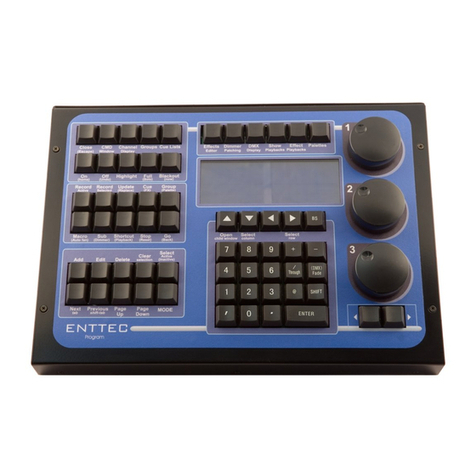
Enttec
Enttec Playback user manual
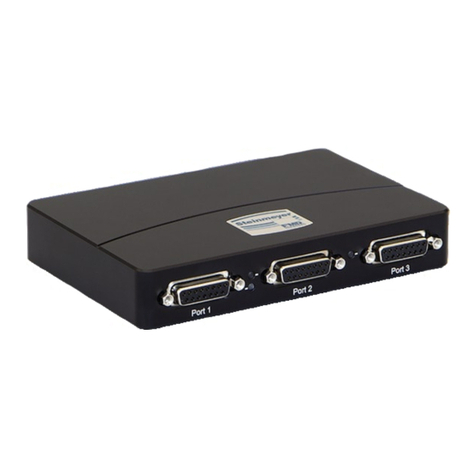
Steinmeyer
Steinmeyer FMC200 operating manual
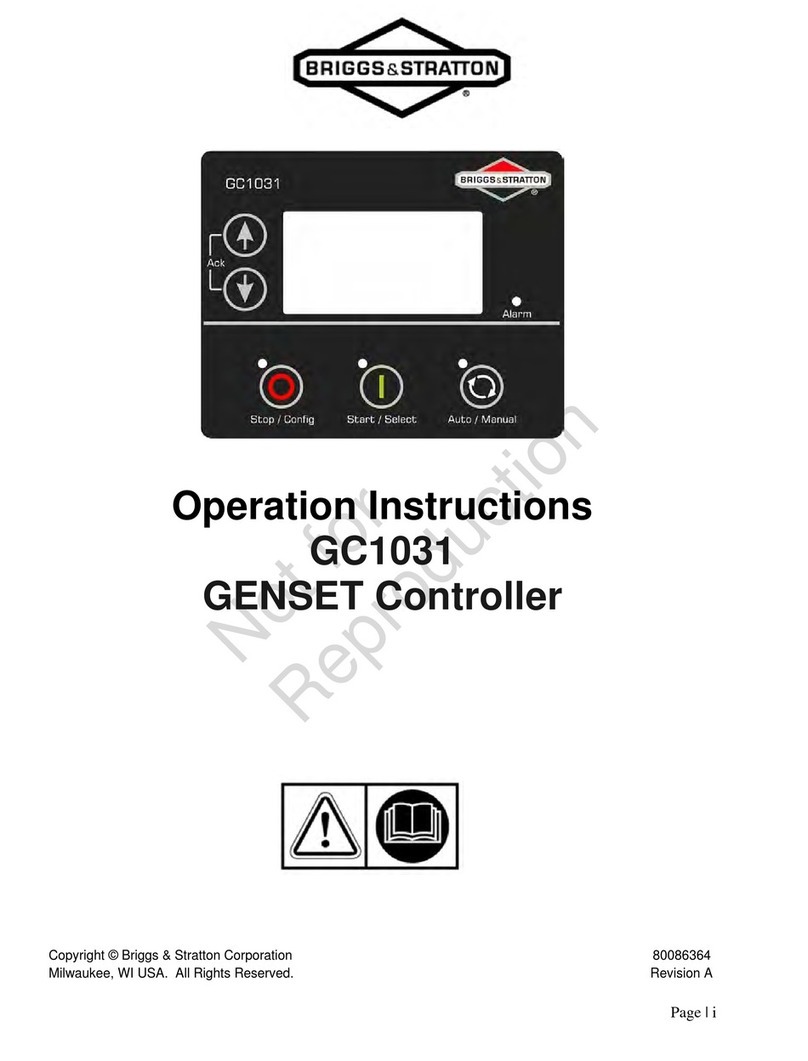
Briggs & Stratton
Briggs & Stratton GC1031 Operation instructions
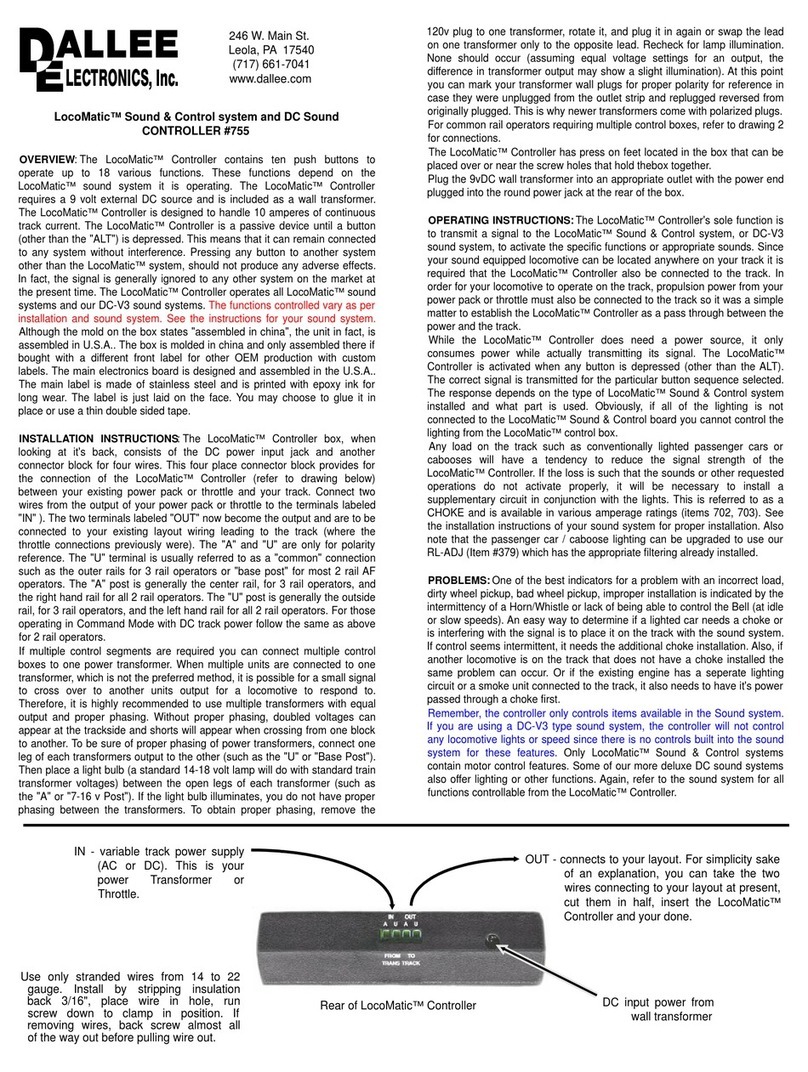
DALLEE ELECTRONICS
DALLEE ELECTRONICS LocoMatic 755 Installation and operating instructions
Anolis
Anolis ArcPower Rack Unit Pixel CE: ArcPower Rack Unit Pixel... user manual
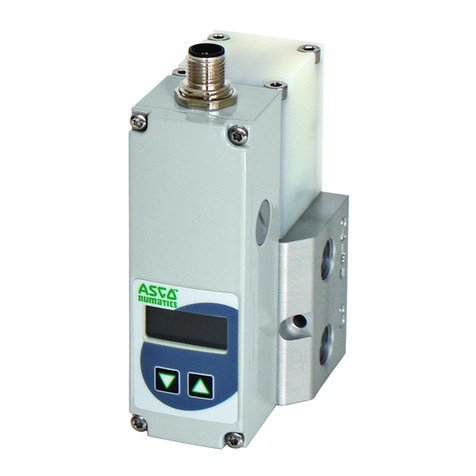
Emerson
Emerson Asco Sentronic LP 617 Series installation manual
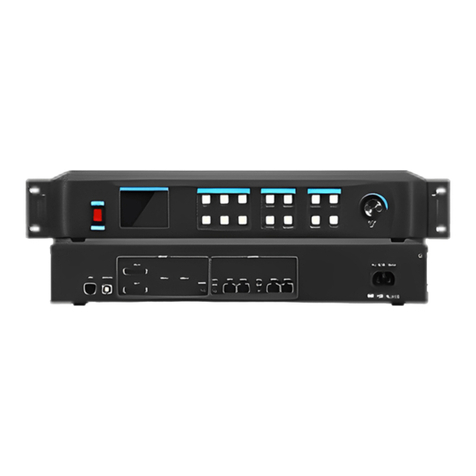
Kystar
Kystar KLS4 manual
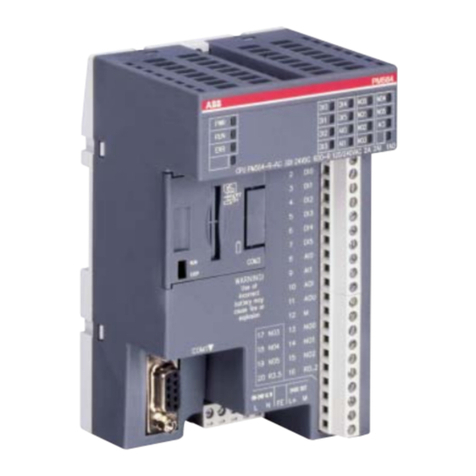
ABB
ABB PM564-R-AC installation instructions
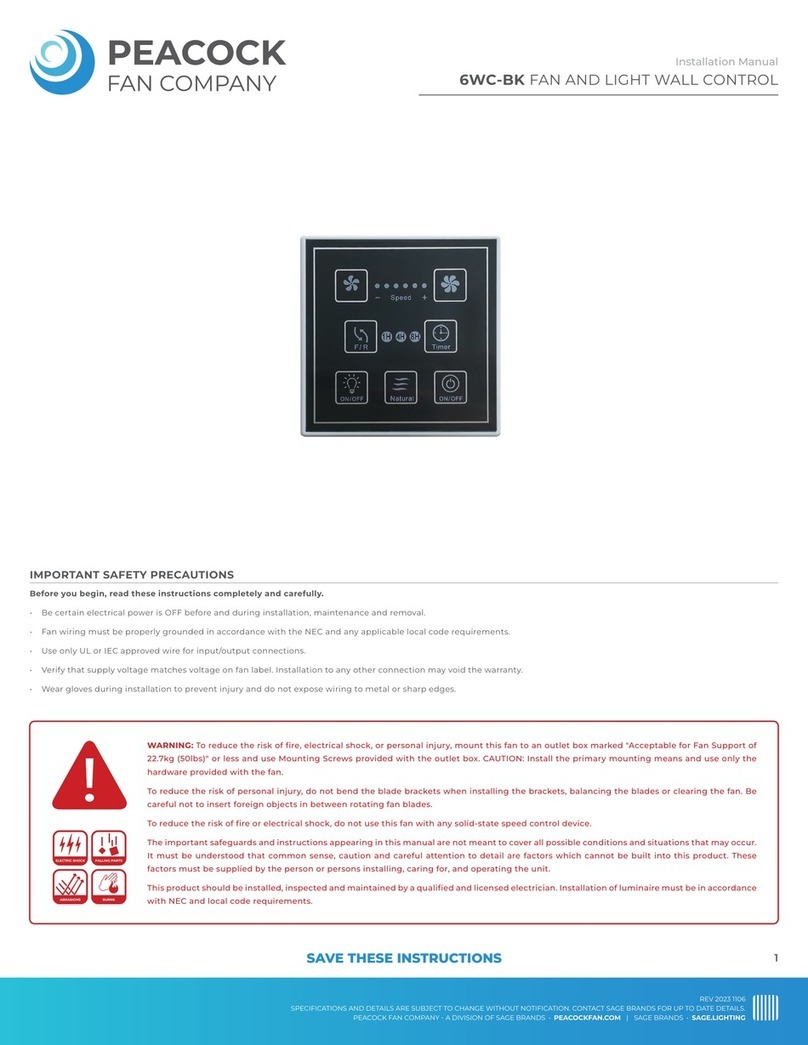
PEACOCK
PEACOCK 6WC-BK installation manual
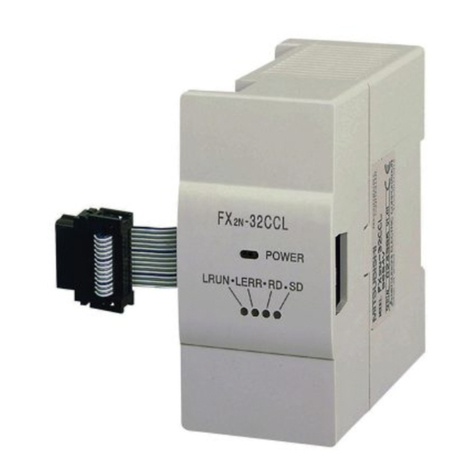
Mitsubishi Electric
Mitsubishi Electric FX2N-32CCL installation manual
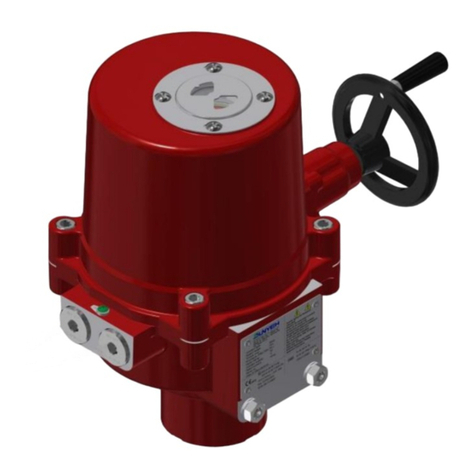
Sun Yeh Electrical
Sun Yeh Electrical OME Series Operation manual
